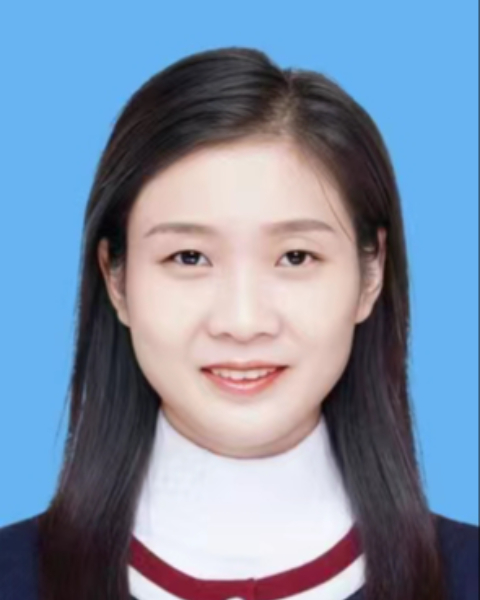PQA 06 - PQA 06 Biology and Patient Reported Outcomes/QoL/Survivorship Poster Q&A
2932 - SET, Non-Small Cell Lung Cancer Cell Stemness, and Radio-Immunotherapy Resistance Via JAK/STAT-TGF ß Signaling Network
Monday, September 30, 2024
5:00 PM - 6:00 PM ET
Location: Hall C
Screen: 23

Xiao Zhang, MD, PhD, MS, RT
Jinan, Shandong
Presenter(s)
X. Zhang1, H. Li2, J. Liu3, P. Wang4, M. Wu1, J. Yu5, and D. Chen1; 1Shandong Cancer Hospital and Institute, Shandong First Medical University and Shandong Academy of Medical Sciences, Jinan, Shandong, China, 2Interventional Department of the First Affiliated Hospital of Shandong First Medical University, JiNan, Shandong, China, 3Department of Radiation Oncology and Shandong Provincial Key Laboratory of Radiation Oncology, Shandong Cancer Hospital and Institute, Shandong First Medical University and Shandong Academy of Medical Sciences, Jinan, Shangdong, China, 4Shandong First Medical University and Shandong Academy of Medical Sciences,, JiNan, Shandong, China, 5Department of Radiation Oncology, Shandong Cancer Hospital and Institute, Shandong First Medical University and Shandong Academy of Medical Sciences, Jinan, China
Purpose/Objective(s): In view of the fact that cancer stem cells (CSCs) represent the major source of therapy resistance, the main purpose of this study is to elucidate the role and mechanism of CSCs in mediating radiotherapy (RT) combined with immunotherapy (iRT) resistance in non-small cell lung cancer (NSCLC), and to develop novel potential therapeutic targets to improve the therapy effect of iRT. Materials/
Methods: CD133+ CSCs were isolated from NSCLC tumor tissues and cell lines, and the regulatory function of SET on cell stemness was verified by manipulating gene expression. Subcutaneous, orthotopic and spontaneous lung cancer mouse models have been extensively used to validate the effect of targeting SET combined with iRT in vivo. The communication between tumor cells and macrophages was explored through a cell co-culture system. For mechanism, Co-IP and GST pull-down were employed to determine protein-protein interactions. ChIP and Dual-luciferase reporter assays were used to detect the binding of transcription factors to target genes and promotor transcriptional activity.
Results: SET is abnormally overexpressed in NSCLC and maintains self-renewal of CSCs, which is triggered by RT-induced SET nuclear translocation. Furthermore, SET-regulated CSCs promote M2 polarization of macrophages through secrete high levels of TGF-ßs, and creating an immunosuppressive microenvironment that resist iRT. Importantly, SET inhibition by antagonists or knockdown markedly improves iRT efficiency, leading to significant tumor growth inhibition and extended survival in mouse models. Encouragingly, combination of the three basically leads to tumor growth arrest. Mechanistically, RT-induced SET nuclear entry upregulates genes IL6ST and STAT4 through enhancing their promotor histone crotonylation when binding with transcription factor YY1, activating the JAK-STAT signaling pathway. In addition, high-level STAT4 further binds to the TGFB1/2/3 promoter region, promoting TGFB1/2/3 mRNA expression and protein secretion, thus maintaining CSCs stemness and facilitating CSC-macrophage signaling.
Conclusion: Altogether, our study illustrated that SET enhances the stemness of NSCLC cells through JAK/STAT-TGF ß Signaling network, which mediated immunosuppression through promote M2 polarization of macrophages, culminating in iRT resistance. Therefore, targeting SET offers a promising strategy to eradicate CSCs, ameliorate the immunosuppressive tumor microenvironment, and enhance iRT efficacy, paving the way for sustained therapeutic success.
Purpose/Objective(s): In view of the fact that cancer stem cells (CSCs) represent the major source of therapy resistance, the main purpose of this study is to elucidate the role and mechanism of CSCs in mediating radiotherapy (RT) combined with immunotherapy (iRT) resistance in non-small cell lung cancer (NSCLC), and to develop novel potential therapeutic targets to improve the therapy effect of iRT. Materials/
Methods: CD133+ CSCs were isolated from NSCLC tumor tissues and cell lines, and the regulatory function of SET on cell stemness was verified by manipulating gene expression. Subcutaneous, orthotopic and spontaneous lung cancer mouse models have been extensively used to validate the effect of targeting SET combined with iRT in vivo. The communication between tumor cells and macrophages was explored through a cell co-culture system. For mechanism, Co-IP and GST pull-down were employed to determine protein-protein interactions. ChIP and Dual-luciferase reporter assays were used to detect the binding of transcription factors to target genes and promotor transcriptional activity.
Results: SET is abnormally overexpressed in NSCLC and maintains self-renewal of CSCs, which is triggered by RT-induced SET nuclear translocation. Furthermore, SET-regulated CSCs promote M2 polarization of macrophages through secrete high levels of TGF-ßs, and creating an immunosuppressive microenvironment that resist iRT. Importantly, SET inhibition by antagonists or knockdown markedly improves iRT efficiency, leading to significant tumor growth inhibition and extended survival in mouse models. Encouragingly, combination of the three basically leads to tumor growth arrest. Mechanistically, RT-induced SET nuclear entry upregulates genes IL6ST and STAT4 through enhancing their promotor histone crotonylation when binding with transcription factor YY1, activating the JAK-STAT signaling pathway. In addition, high-level STAT4 further binds to the TGFB1/2/3 promoter region, promoting TGFB1/2/3 mRNA expression and protein secretion, thus maintaining CSCs stemness and facilitating CSC-macrophage signaling.
Conclusion: Altogether, our study illustrated that SET enhances the stemness of NSCLC cells through JAK/STAT-TGF ß Signaling network, which mediated immunosuppression through promote M2 polarization of macrophages, culminating in iRT resistance. Therefore, targeting SET offers a promising strategy to eradicate CSCs, ameliorate the immunosuppressive tumor microenvironment, and enhance iRT efficacy, paving the way for sustained therapeutic success.
